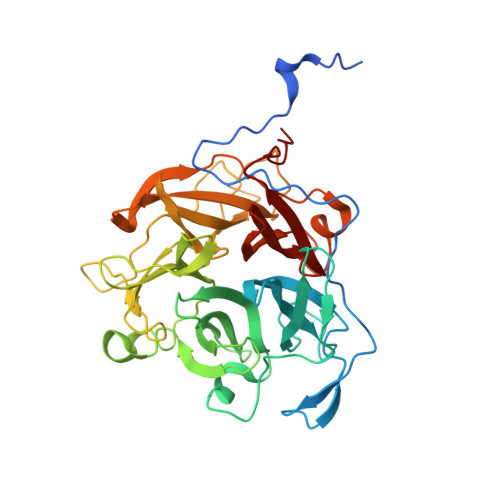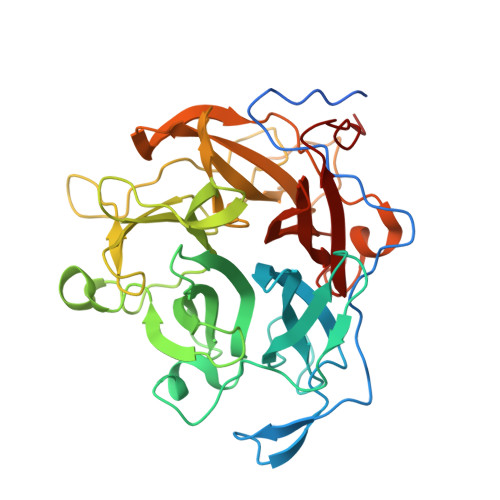The Gh130 Family of Mannoside Phosphorylases Contains Glycoside Hydrolases that Target Beta-1,2 Mannosidic Linkages in Candida Mannan
Cuskin, F., Basle, A., Day, A.M., Ladeveze, S., Potocki-Veronese, G., Davies, G.J., Gilbert, H.J., Lowe, E.(2015) J Biol Chem 290: 25023
- PubMed: 26286752
- DOI: https://doi.org/10.1074/jbc.M115.681460
- Primary Citation of Related Structures:
5A7V - PubMed Abstract:
The depolymerization of complex glycans is an important biological process that is of considerable interest to environmentally relevant industries. β-Mannose is a major component of plant structural polysaccharides and eukaryotic N-glycans. These linkages are primarily cleaved by glycoside hydrolases, although recently, a family of glycoside phosphorylases, GH130, have also been shown to target β-1,2- and β-1,4-mannosidic linkages. In these phosphorylases, bond cleavage was mediated by a single displacement reaction in which phosphate functions as the catalytic nucleophile. A cohort of GH130 enzymes, however, lack the conserved basic residues that bind the phosphate nucleophile, and it was proposed that these enzymes function as glycoside hydrolases. Here we show that two Bacteroides enzymes, BT3780 and BACOVA_03624, which lack the phosphate binding residues, are indeed β-mannosidases that hydrolyze β-1,2-mannosidic linkages through an inverting mechanism. Because the genes encoding these enzymes are located in genetic loci that orchestrate the depolymerization of yeast α-mannans, it is likely that the two enzymes target the β-1,2-mannose residues that cap the glycan produced by Candida albicans. The crystal structure of BT3780 in complex with mannose bound in the -1 and +1 subsites showed that a pair of glutamates, Glu(227) and Glu(268), hydrogen bond to O1 of α-mannose, and either of these residues may function as the catalytic base. The candidate catalytic acid and the other residues that interact with the active site mannose are conserved in both GH130 mannoside phosphorylases and β-1,2-mannosidases. Functional phylogeny identified a conserved lysine, Lys(199) in BT3780, as a key specificity determinant for β-1,2-mannosidic linkages.
Organizational Affiliation:
From the Institute for Cell and Molecular Biosciences, Medical School Newcastle University, Newcastle upon Tyne NE2 4HH, United Kingdom.


















